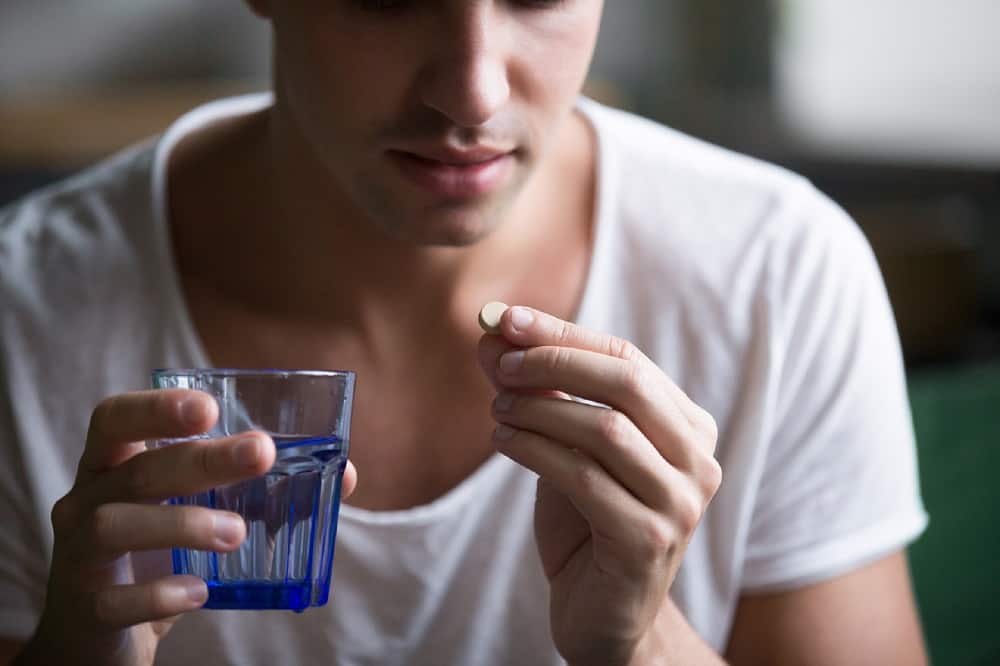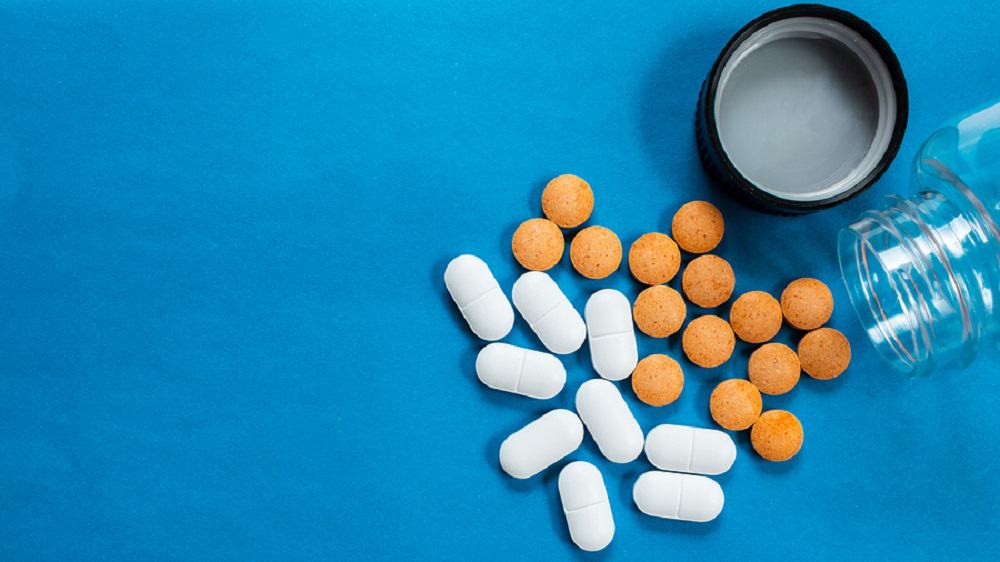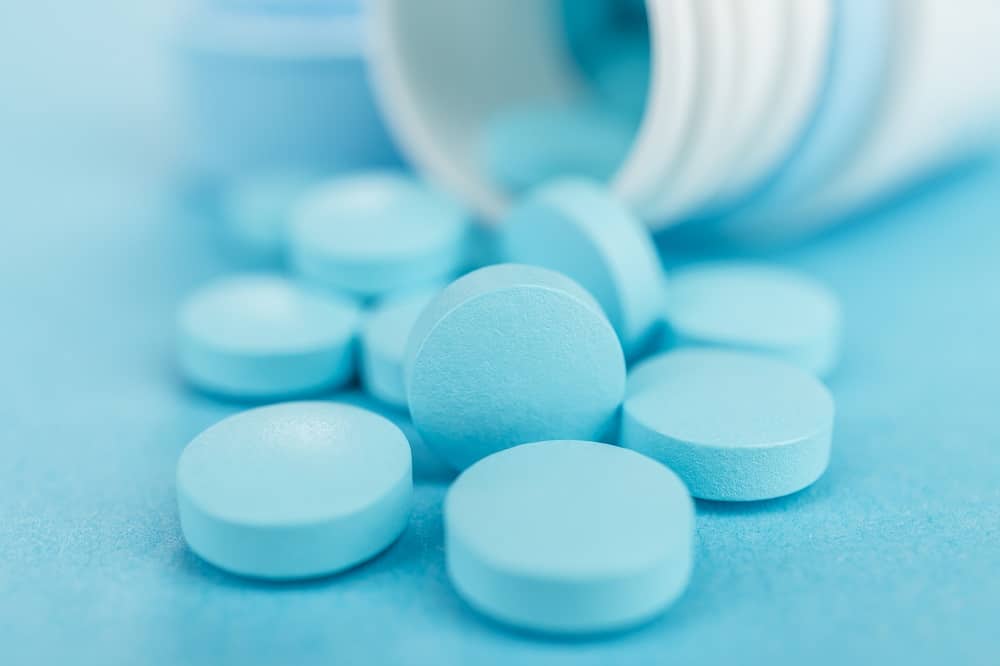DISCLAIMER: On a recent episode of her reality television show, Kim Kardashian casually mentioned that she had used Ecstasy in the past. Here, we take a look at why that matters even today. To do this, we will use what is publicly known about Kim and her famous family, using their own words. We will also see what science has to say, both about addiction in general and party drugs in particular.“[I think] it’s just weird to people that I’ve done Ecstasy but I don’t drink, I don’t smoke weed, I don’t do anything. So it’s weird to have done that.” ~ Kim Kardashian On the one hand, socialite and reality star Kim Kardashian represents excess, on almost every level. She first became famous for…being famous, as she hung around with heiress Paris Hilton. And in 2007, when a years-earlier sex tape of Kim and her then-boyfriend was leaked, she parlayed that embarrassing notoriety into worldwide fame. Since 2007, Kim and the rest of her family have been featured on Keeping Up With the Kardashians—sisters Kourtney and Khloé, half-sisters Kendall and Kylie Jenner, parents Kris and Caitlyn Jenner (formerly Bruce), and brother Rob Kardashian, along with their significant others. The show has even spawned an amazing seven spinoffs. It seems like everywhere you look, there’s a famous member of the Kardashian family, and it all started with Kim. This omnipresence has made Kim Kardashian a pop culture phenomenon—she is an entrepreneur, she has millions of followers online, and her personal life is scrutinized in the media almost every day. In 2015, Time magazine named her one of its “100 Most Influential People”. But on the other hand, Kim Kardashian is also very much about self-control.
“Get your loved one the help they need. Our substance use disorder program accepts many health insurance plans, this is our residential program.”
For example, she is outspoken about the fact that she doesn’t drink or do drugs. Kim has even been quoted as saying she has been the designated driver for her family since she was 14 years old because she is the “responsible” one in the family. According to Kim, she’s never been into drugs and she doesn’t like the taste of alcohol. This is in decided contrast to some other members of her extended family. Her sister Khloé and her mother Kris have both been known to like a drink or two…or more. And former brother-in-law Lamar Odom, the basketball star who was married to Khloé from 2009 to 2016, struggled mightily with a severe cocaine addiction that nearly killed him in 2015. That’s why it came as such a shock when Kim recently admitting to using Ecstasy in the past—specifically mentioning her 2000 marriage to music producer Damon Thomas and her 2003 sex tape with Ray J.
What is Ecstasy?
“I don’t know whether you understand the kind of fire you were playing with, or the consequence it can have…people are dying. Do you want to be someone who ends up on a slab? Do you want to be responsible for putting someone else there? How many more parents have to be told their child is dead?” ~ Magistrate Brett Shields, admonishing a defendant who tried to smuggle 14 MDMA pills into a music festival Ecstasy is the most popular “party drug”. These substances—also called “club drugs”—are so-called because they are most commonly used among the sub-culture of people who frequent nightclubs, discos, music festivals, and raves. Ecstasy is chemically similar to both hallucinogens and stimulants. Users report such “positive” effects as:
- Euphoria – feelings of happiness and well-being
- Altered sensations, resulting in a greater appreciation of the music and lights
- Self-confidence
- Increased sociability
- Empathy and closeness with others
- Reduced anxiety
- Relaxation
- Inner peace
- Increased sensuality and arousal
- Mild hallucinations
The chemical name for Ecstasy is 3,4-methylenedioxy-methamphetamine, abbreviated as MDMA. Among drug users, it has many other names, including:
- X
- XTC
- Molly
- Adam
- Eve
- Clarity
- Peace
- Lover’s Speed
First discovered in 1912, MDMA currently has no approved medical uses. However, in the 1970s, it was used by some therapists to treat improve communication and accelerate treatment. It is important to note, however, that MDMA was never subjected to clinical trials or approved by the Food and Drug Administration. But after MDMA began being misused recreationally by more and more people, the Drug Enforcement Administration stepped in and classified MDMA as a Schedule I illegal substance in the mid-1980s. The United Nations’ Commission on Narcotic Drugs soon followed suit. In the mid-1970s, only around 10,000 doses of Ecstasy were consumed in the United States every year. Today, there are up to 29 million users worldwide.
“We treat both addiction and co-occurring disorders and accept many health insurance plans. Take a look at our inpatient program.”
What are the Side Effects of Ecstasy?
“…MDMA is a potent and selective serotonin neurotoxin in animals…Hence, there is growing concern that MDMA may also produce neurotoxic effects in humans.” ~ Professor George Ricaurte Despite the perception that ecstasy is a “safe” alternative to other drugs, the fact remains that it is an unregulated illicit drug that can produce a number of unpleasant—and even potentially dangerous—side effects. This can occur immediately or after short-term use:
- Dilated pupils
- Blurred vision
- Muscle or joint stiffness
- Involuntary teeth clenching, to the point of lockjaw
- Increased body temperature, heart rate, and blood pressure
- Hot flashes
- Chills
- Sweating
- Nausea
- Vomiting
- Diarrhea
- Sodium imbalance
- Dehydration
- Inability to focus
- Anxiety, to the point of panic attacks
- Depression
- Irritability
- Aggression
- Inability to sit still
- Restless legs
- Poor impulse control
- Brain lesions
- Impaired memory
- Shortened attention span
- Decreased motivation and pleasure from everyday life
- Insomnia
- Loss of appetite
- Decreased sex drive
- Erectile dysfunction
- The reduced pleasure from sex
- Higher risk of sexually-transmitted diseases
- Seizures
- Unconsciousness
The biggest physical danger comes from increased body temperature and dehydration. Fatalities have been reported, as well as severe organ damage, especially to the brain, heart, and kidneys.
What are Some Other Party Drugs?
“The data are clear that it’s moved out of the club scene. We are now seeing the drugs used by everybody. Parents can’t just say, “My kid doesn’t go to clubs, so I don’t need to worry about it.”” ~ Alan Leshner, former Director, National Institute on Drug Abuse There are several other illicit substances frequently used within this particular subculture, including:
- Cocaine—“Coke, Blow, Snow, Rock, Nose Candy, Crack”
- Methamphetamine—“Meth, Speed, Ice, Crank, Glass”
- Ketamine—“Special K, Vitamin K, Kit Kat, Cat Valium”
- Adderall—“Addy, Bennies, Uppers, Pep Pills, Study Buddies”
- Ritalin—“Rids, Vitamin R, Pineapple, Jif, Kiddy Cocaine”
- Bath Salts—“Ivory Wave, Blue Magic, Vanilla Sky, Lunar Wave”
- GHB—“Liquid Ecstasy, Grievous Bodily Harm, Georgia Home Boy”
- Amyl Nitrate—“Poppers, Boppers, Pearls”
- Mephedrone—“Meph, MCAT, Bubbles, Drone, Miaow”
- LSD—“Acid, Blotter, Paper Mushrooms, Rainbow”
- 25I-NBOMe—“N-Bomb, Smiles, 25i”
Each of these drugs is either a stimulant or a hallucinogen. Psychedelic drugs are popular because they enhance the light-music experience, and stimulants allow users to stay awake and “party” longer. Unfortunately, this creates yet another danger. Frequently, stimulant party drugs are used to counter the sedating effects of alcohol. This allows the user to drink even heavier. However, that leads to greater intoxication, risky behaviors, blackouts, and potentially-deadly alcohol poisoning.
Ecstasy and Addiction
“The levels of serotonin and another chemical associated with serotonin were 50 to 80 percent lower in the brain of the Ecstasy user. This is the first study to show that this drug can deplete the level of serotonin in humans.” ~ Dr. Stephen Kish, PhD, Centre for Addiction and Mental Health One of the biggest risks of MDMA use is the potential for addiction. Like other substances of abuse, Ecstasy changes the brain’s chemistry by affecting reward pathways. Specifically, it alters the production of the neurotransmitters that act as chemical messengers for the brain.
- Serotonin – associated with the regulation of pain, appetite, moody, and sleep
- Dopamine – associated with reward, pleasure, memory, motivation, and learning
- Norepinephrine -associated with alertness, arousal, readiness for action, cognition, motivation, intellect, and the ability to form social relationships.
Of these, serotonin and norepinephrine are most affected by Ecstasy use. Significantly, the use of the drug results in the depletion of these neurotransmitters. Of special relevance, insufficient levels of norepinephrine play a strong role in the development of depression, while the loss of serotonin explains the emotional and behavioral problems that a regular Ecstasy user experiences when they stop using the drug. Here’s the thing -because MDMA triggers positive or pleasurable sensations, a person uses because it makes them feel good. It is a conscious CHOICE. At least, it is in the beginning. But because regular use leads to a dependence that triggers unpleasant or painful symptoms when the drug is unavailable or the person tries to quit, the person must now use to keep from feeling bad. It becomes a COMPULSION, rather than a choice. This is an addiction. And because the brain becomes accustomed to the constant presence of the drug, a tolerance develops, meaning ever-increasing amounts are needed to achieve the same results. This can cause several new problems, including:
- Increased tolerance, dependence, and addiction
- Higher risk of overdose
- Greater possibility of multi-substance use as the user is compelled to seek stronger new sensations
Significantly, 75% of all drug overdoses—and 98% of those that are fatal—involve multiple substances.
Drug Use Leads to Bad Decisions
“I got married on ecstasy. I did ecstasy once and I got married, I did it again and I made a sex tape. Like everything bad would happen.” ~ Kim Kardashian Knowing what we do about MDMA, it’s not surprising that Kim Kardashian made serious errors in judgment involving her personal relationships. In later interviews, she has called the sex tape “humiliating”. Her marriage at 19 to the 10-years-older Damon Thomas was marked by control issues and domestic violence. Because it increases emotionality, inhibits impulse control, and creates an artificially-exaggerated sense of empathy and intimacy with others, Ecstasy use can result in extremely poor decision-making when it comes to sex and relationships. For example, someone who has taken MDMA may have lowered inhibitions and standards, resulting in a higher number of sexual partners or unsafe or unprotected sex. Some other party drugs are even worse. For example, people on methamphetamine have both a higher sex drive and lower inhibitions and are 40% more likely to have sex than when they haven’t taken the drug. And because impaired judgment causes inconsistent condom use, the rates of sexually transmitted diseases are higher. Female meth users are 48% more likely to test positive for chlamydia or gonorrhea. But in an ironic twist, this type of drug eventually burns out the brain’s pleasure centers, thereby killing the person’s desire for and enjoyment of sex.
Substance Abuse Incidents within the Family
“I know her partying and drinking was a big issue in their marriage. He thought she had a problem with alcohol because she would drink in such excess. He worried about the children.” ~ Ellen Kardashian, widow of Kris Jenner’s ex-husband Problematic substance use is a recurring theme within the extended Kardashian family.
- 1991: Kris’ drinking supposedly contributed to her divorce from first husband Robert Kardashian
- 2007: Khloe’ was arrested for Driving Under the Influence
- 2014: Rob checked into a rehab program for marijuana, alcohol, and cough syrup addiction
- 2015: Lamar Odom, Khloe’s husband, had a cocaine addiction that led to a series of life-threatening strokes
- 2015: Scott Disick, the on-again-off-again partner of Kourtney, sought treatment for drug and alcohol addiction
- 2015: There have been multiple reports that Kylie started drinking at age 14 and eventually developed a significant addiction to Xanax and cocaine.
- 2016: Following a liposuction procedure, Kim’s husband Kanye West claims he was “addicted to opioids”.
The Impact of Genetics and Environment
“[Kris] never did drugs, so she was just so upset thinking that I was going to turn into something, you know, and just be this crazy drug addict. And I was just like, ‘You know what? She’s so right, I’m so over it. Like, this is not me. And I just never did anything.’” ~ Kim Kardashian, speaking on her mother’s reaction to Kim telling her she used Ecstasy Substance abuse and addiction run in families, so it is not totally unexpected that Kris, Khloe’, Rob, Kim, and now Kylie have all had personal issues with alcohol and/or drugs. In fact, up to 60% of a person’s vulnerability to a Substance Use Disorder is due to genetics. And the more close relatives with a SUD a person has, the greater their own risk. But it is the environment that largely determines whether or not a person’s biological predisposition ever manifests itself. Parental substance use and attitudes also matter a great deal.
- More children are exposed to alcohol at home than anywhere else.
- 82% of parents who drink raise drinking children.
- Likewise, 72% of parents who don’t drink raise non-drinking children.
- Mothers who drink significantly influence the drinking and drug behaviors of children of both sexes.
- 77% of mothers who have more than one daily drink have children who use alcohol or drugs.
- Girls are most affected by their father’s drinking.
How serious is the problem of parental substance abuse? The Substance Abuse and Mental Health Services Administration estimates that about 1 in 8 minor children in America lives in a household where at least one parent has had a SUD within the past year. That equates to nearly nine million children. Substance abuse by a parent can also affect a child’s adult behaviors and relationships. Children of alcoholics or addicts (COA) are:
- Four times more likely to become alcoholics/addicts
- Three times more likely to MARRY someone with a SUD.
- Three times more likely to be physically, emotionally, sexually, or mentally abused
Relevant to this, Kris Jenner reputedly has struggled with alcohol abuse, and as a result, four of her children have suffered their own difficulties. Just as relevant, two of her children have married spouses with drug problems. Despite this, the Kardashian family is very close. And nowhere is the positive power of parental influence more on display than in the situation involving Kim Kardashian and Ecstasy. In fact, Kim credits her mother as the reason why she stopped using party drugs. Kris Jenner’s disapproval and concern made Kim take a step back and reevaluate her actions before the problem got any worse. And the best part? Kris was able to get through to her daughter without the use of the unproductive guilt and toxic shame that so many other substance abusers in crisis are subjected to.
“We accept many health insurance plans. Get your life back in order, take a look at our residential program.”
The Modern Hazard of Counterfeit Drugs
“It is like Russian roulette. If you get these PMA pills and take them, there is a chance you will die.” ~ Dr. Bruce Goldberger, Chief of Forensic Medicine, Director of Toxicology University of Florida in Gainesville There is one danger that today’s MDMA users face that wasn’t a major concern back when Kim Kardashian was experimenting with party drugs. Today, there is a very real risk that, instead of Ecstasy, they are unknowingly taking some other unknown and unsafe substance. And that can be the difference between life and death. All in the name of higher profits, drug cartels, and dealers are increasingly lacing—or even replacing—their products with other unsafe substances. They do this to boost the potency or to save time and money. They count on the fact that most street-level users simply won’t be able to tell the difference before they buy. This turns any drug use into a ticking time bomb with unpredictable effects, even for first-time or casual users. What kind of substances are being counterfeited for common party drugs?
- Paramethoxymethamphetamine, or PMA—A knock-off of MDMA that has recently been linked to several deaths in Florida and Chicago
- N-ethylpentylone -A powerful stimulant that can trigger anxiety, paranoia, insomnia, and hallucinations
- Prescription drugs
- Anesthetic
- Boric acid
- Household cleaners
- Caffeine
- Salt
- Sugar
And if the person also uses other illicit drugs, the risk gets much worse. Increasingly, fentanyl–a powerful synthetic opioid that is up to 100 times stronger than morphine – is mixed with or sold as prescription painkillers, heroin, cocaine, or Xanax. Often, fentanyl is pressed into pill form and intentionally mismarked to complete the deception. This is what killed music legend Prince, who thought he was taking Vicodin. In fact, fentanyl is driving the still-worsening opioid epidemic and has replaced heroin as the deadliest drug in America.
What We Can Learn from Kim Kardashian’s Admission?
“…If I had the information and I had known better, I would have done better.” ~ Kim Kardashian There are several important takeaways from Kim Kardashian’s story. FIRST, substance abuse, addiction, and all of the terrible consequences thereof can happen to ANYONE. Kim and the rest of her family “have it all”—success, fame, wealth, talent, beauty, and supportive loved ones—but they still have been impacted by the disease of addiction. SECOND, addiction is a family disease. In other words, if ANYONE in the family has a problem with alcohol or drugs, then EVERYONE is at risk. THIRD, there is NO SUCH THING as “safe” drug use, not even “experimentation”. At best, the user can make poor decisions and engage in risky behaviors, and at worst, they can ruin their physical and mental health or even lose their life. FOURTH, family support is absolutely invaluable to prevent and recover from problematic substance use.
- Kim Kardashian says it was her mother’s reaction that motivated her to stop using drugs.
- Family influence helped motivate Rob to check into a rehab program.
- Khloe’ stood by Lamar Odom during his recovery from cocaine addiction, even though they were estranged.
Finally—and most importantly—RECOVERY IS POSSIBLE. While Kim Kardashian herself did not succumb to the typical progression of drug use and addiction, she easily COULD have, just like other members of her family. But in each case, a successful return to sobriety and health was made possible through family intervention and support, lifestyle changes, and where it was needed, professional help.




